Recreational canoeing burst onto the scene in the mid-1880s. Canoeing was hardly a new concept in the Thousand Islands. For hundreds of years, Native Americans plied Eel Bay in their birch bark canoes when the eels swarmed every June and September. During the 18th and 19th centuries, emissaries of the French fur trade passed through this area in their great voyageur canoes. But as hotels popped up in the 1870s and 1880s, the summer people commonly used a St. Lawrence River skiff for boating on the river.
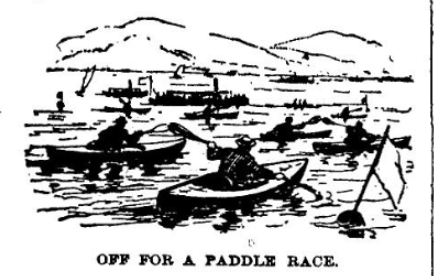
Sketches of early canoes don't look like canoes at all. To me, the vessels they were using looked like kayaks and very skinny sailboats. Canoes were often referred to as “the poor man’s yacht.” Initially, the general public regarded canoes as dangerous crafts that required consummate skill and courage to operate. That was soon all to change. The American Canoe Association and the Thousand Islands had a lot to do with popularizing the sport of canoeing.
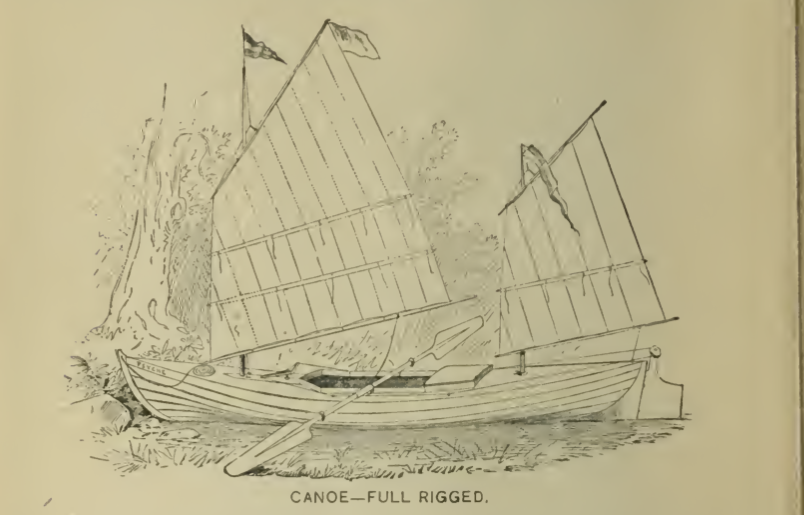
Recreational Sport of Canoeing
Canoeing for fun was first popularized in England, the brainchild of Scotsman, John McGregor. Inspired by the ancient canoes of the British Isles and the native peoples of the Americas, McGregor designed a canoe which he called the “Rob Roy canoe” for his infamous ancestor. The Rob Roy was a decked canoe. Today, McGregor is sometimes recognized as the inventor of the sport of kayaking. In 1865, McGregor took off to explore the rivers of Europe in his new craft. In 1866, he published a book about it, "A Thousand Miles in a Rob Roy Canoe", and founded the Royal Canoe Club. The Prince of Wales became the first commodore.
Rob Roy Canoes
When the American Canoe Association (ACA) was formed, the US members almost exclusively used the Rob Roy, a small-decked canoe powered by a double-blade paddle and sometimes a tiny sail.
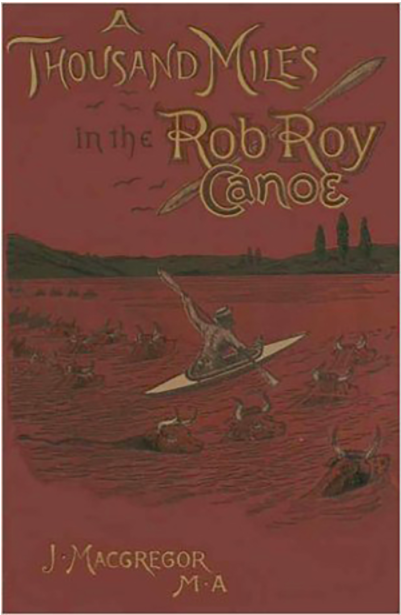
To make the Rob Roy canoe seem even more kayak-like, an apron was often fastened around the paddler’s waist so that only the upper part of the body was exposed to splash. The Canadians, on the other hand, almost exclusively used the birch bark canoe. One newspaper described the canoe as a “cranky craft” and that a novice canoeist should expect numerous dunkings. The article suggested that part of learning to canoe is to practice capsizing and righting the canoe again.
Sailing Canoes
The innovation of the sailing canoe also came from England and another founding member of the Royal Canoe Club in England, Warrington Baden-Powell— the older brother of Robert Baden-Powell, and, the founder of Boy Scouting. Baden-Powell added a deck seat, a tiller, and made the fore and aft bulkheads watertight. Next, he attached two masts and yards and yards of sail. He called his craft Nautilus, and like McGregor, popularized his invention by writing a book, Canoe Travelling: Log of a Cruise on the Baltic.
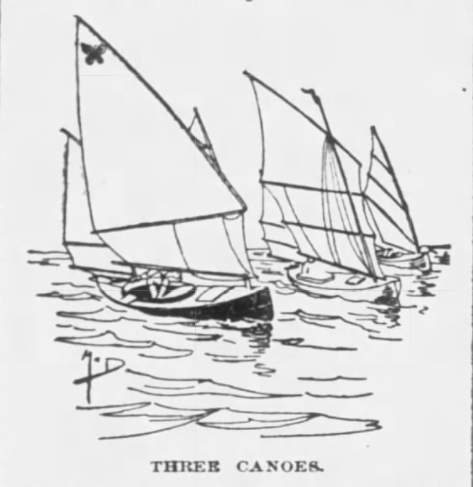
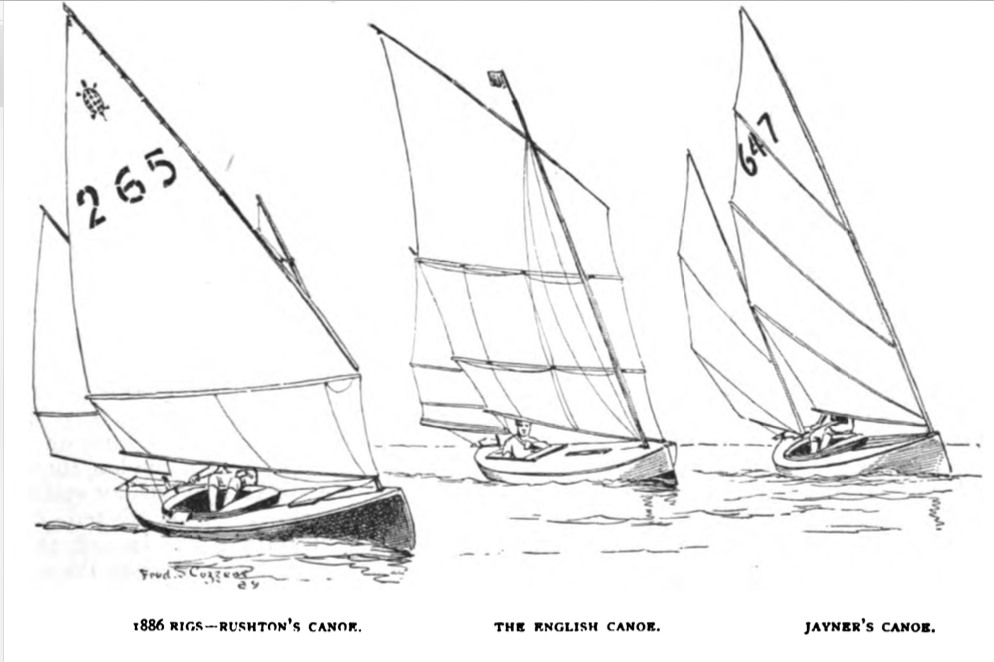
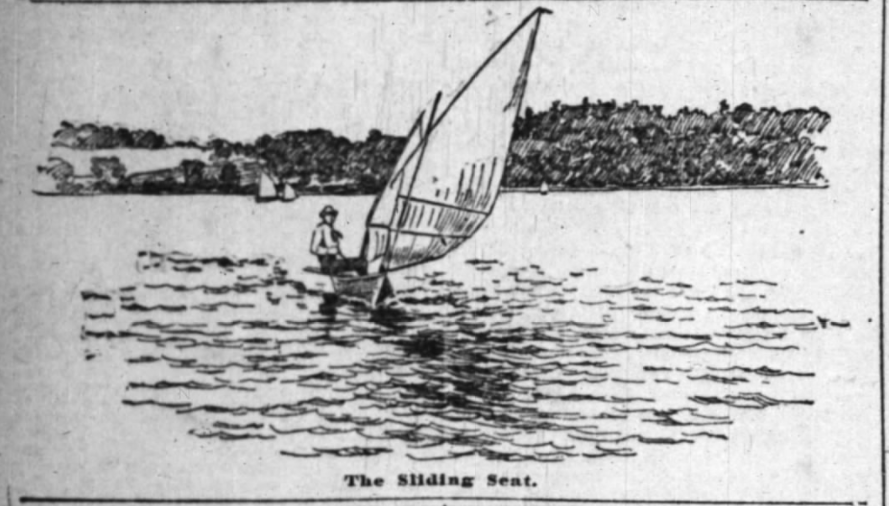
Baden-Powell brought his sailing canoe, Nautilus, all the way from England to compete at Delaney Point in 1886. (Delaney Point is now known as Canoe Point on Grindstone Island.) The Oswego Daily Palladium describes his visit like this: “Although Mr. Baden-Powell started canoe sailing both in England and America, the model of craft has differentiated widely in the two countries in the course of five years. The Englishman lies down in the hole in the middle of his canoe, with only a little of his head showing above the deck. The American, on the contrary, sits upon the upper rail of the center hole and hangs out over the windward rail. Mr. Baden-Powell was much surprised at this difference, but tried the American plan of sitting on top instead of in the canoe. He liked it after awhile, though at first he declared the canoe wobbled horribly.”
Canoeing Becomes a Popular Sport
The popularity of canoeing exploded in the 1880s. This hitherto unknown sport became wildly popular and I have to think that the American Canoe Association at Canoe Point on Grindstone Island had a little bit to do with that.
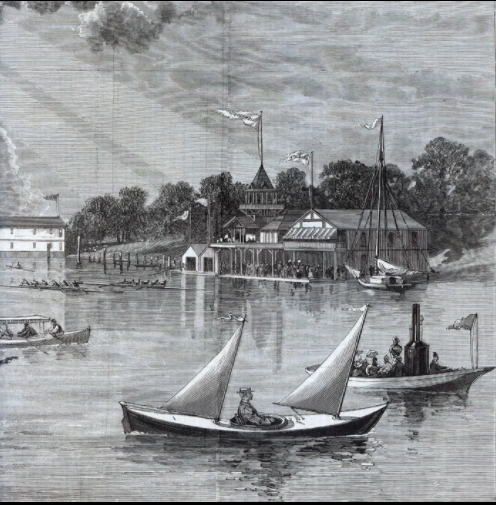
The camp was of great fascination. It was almost a tourist attraction in itself. In 1886, the ACA chartered a boat to ferry visitors from neighboring islands to the camp. Visitors reportedly “inspected the great canoe camp as curiously as if it had been Barnum’s circus or the Wild West show.” Likewise, in 1893, there was another newspaper account of a group of twenty Grenell Islanders traveling to Eel Bay on the steamer Ostego to view the ACA races.
New canoe designers and manufacturers popped up on either side of the international border. Most notably, were The Peterborough Canoe Company in Peterborough, Ontario and Rushton Canoes in Canton, New York. Soon canoe builders were producing finely crafted canoes whose work rivaled the finished product of musical instrument makers.
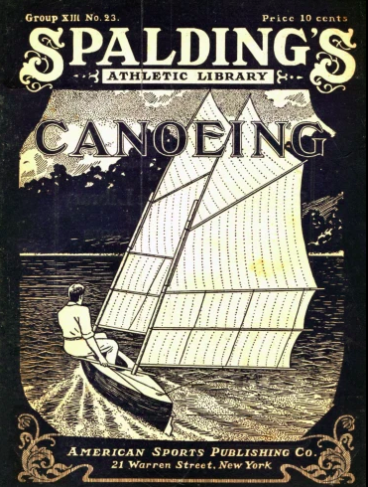
Initially, canoes were constructed for only one person. In 1886, The Watertown Herald described the canoe as “an unsociable affair, an old bachelor or old maid’s boat, for both men and women sail therein. It only holds one, or, in a great pinch, two persons. The approved shape has only the hole in the middle. All the rest is decked lightly over and full of air.”
The first sport canoes were simple affairs, usually about 14 feet long and 28 inches at the beam, costing around $25. By the mid-1890s, a paddling canoe's cost had risen to approximately $40 or $50. Sailing canoes were more expensive, with prices between $150 and $200. Some were fitted out with all sorts of bells and whistles and might cost as much as $500. By the late 1890s, canoes were starting to look like canoes.
Now longer and non-decked, the canoe was now far from being “unsociable.” In 1897, The Brooklyn Daily Eagle reported that a new canoe fad was sweeping through the Thousand Islands. Canoes, outfitted with reclining seats, pillows, lanterns, and sometimes even equipped with a gramophone (record player), embarked on “canoe expeditions to lonely islands at night. Each canoe has one couple and one only. They come forth from hotels and private cottages and meet at some deserted island and there hold the canoe party, which consists for the most part in simply strolling to and fro in small groups and having a jolly good time.”
The idea of young couples cavorting about in the dark unchaperoned was quite risqué. But the prudish Victorian era was coming to a close and vehicles like canoes and bicycles helped whisk courting couples out of sight of chaperones. So widespread was the fad that some canoe companies even marketed a “courting canoe.”
Understandably, linguists are divided over whether the term canoodling came from courting in canoes, or if it evolved from a Dutch word meaning “to cuddle.” The truth probably lies somewhere between the two.
By the 1900s, war canoes gained popularity. These were sometimes called club canoes. They were up to thirty feet long and held sixteen men. These over-sized canoes were later very popular at children’s camps in the 1950s.
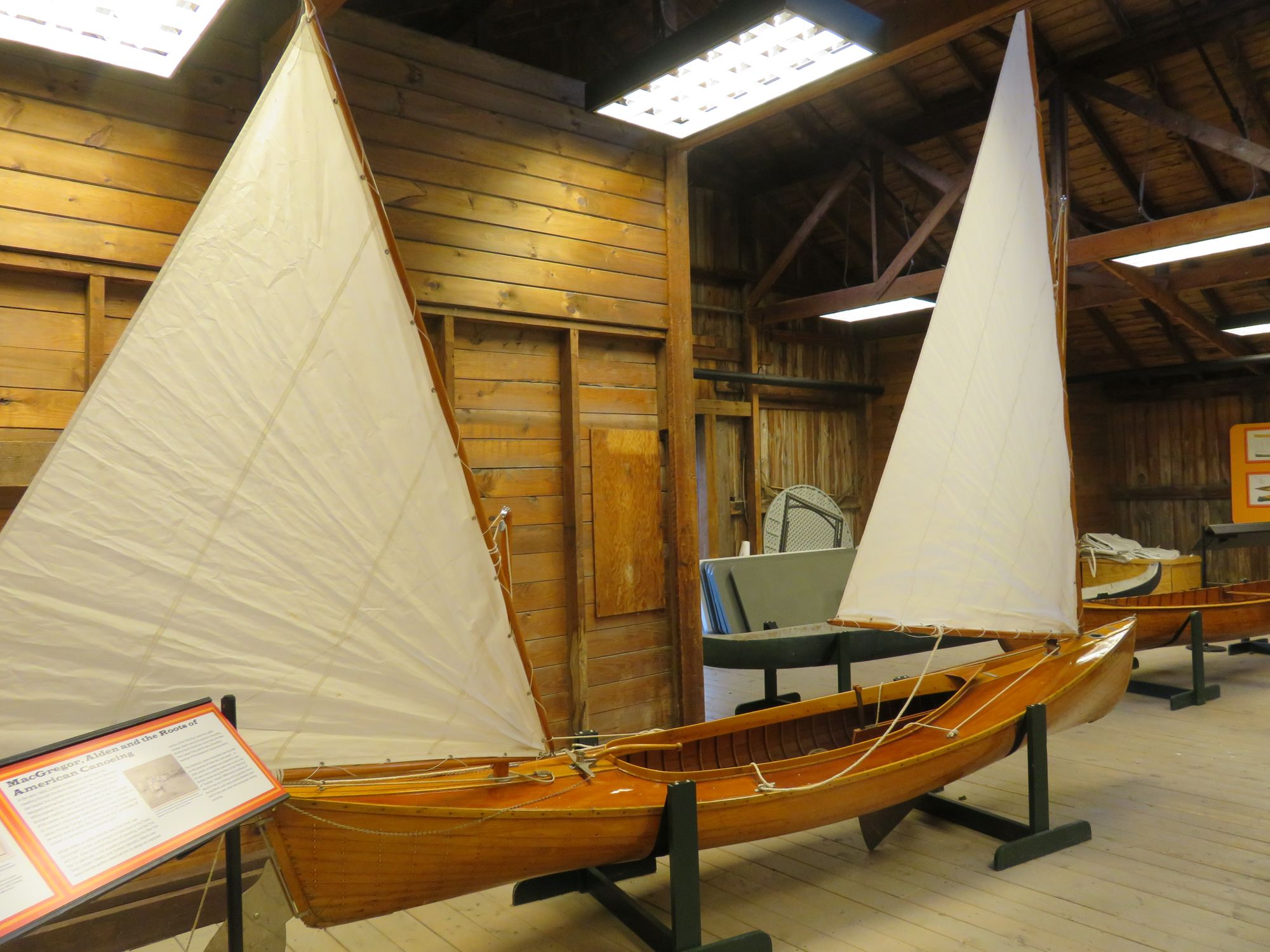
Canoeing Comes Full Circle
We purchased our first kayak in 1999. I was alone on the island and needed something light-weight, as our antique canoes were too heavy for me to handle on my own. It was important to me to be out on the water each day paddling. Our children—like my husband, his mother, and grandmother before—grew up paddling canoes. I don’t think any of our granddaughters have ever been in a canoe. When they visit the island, they paddle in kayaks.
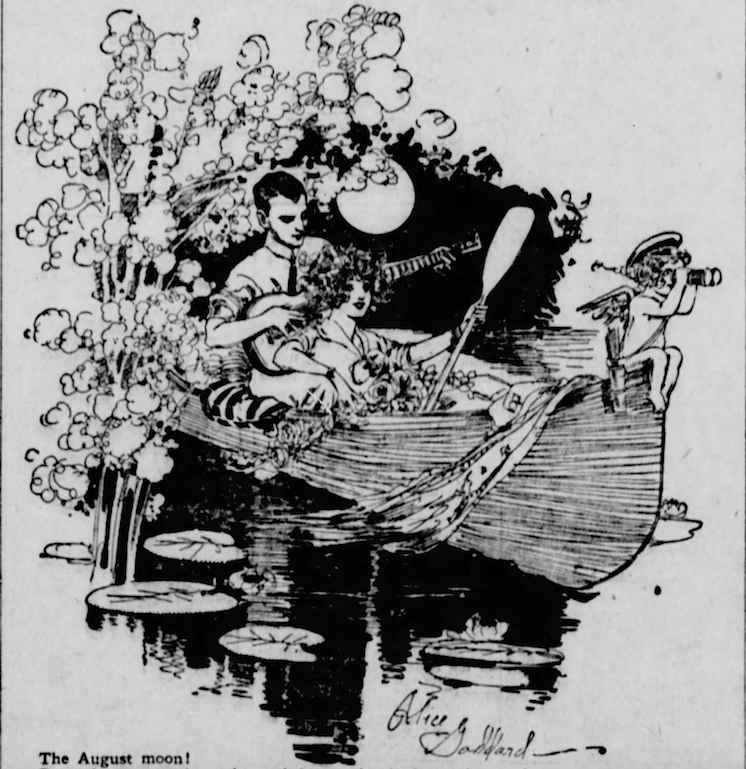
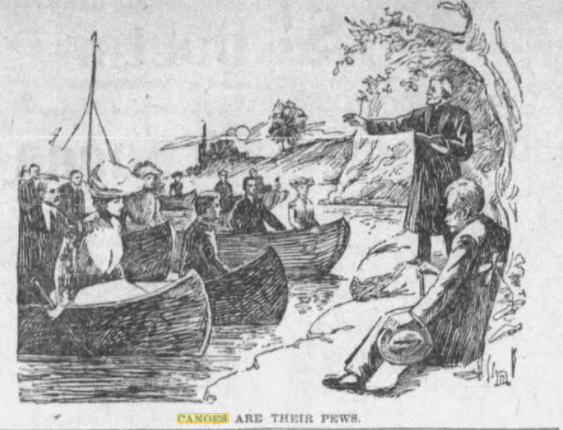
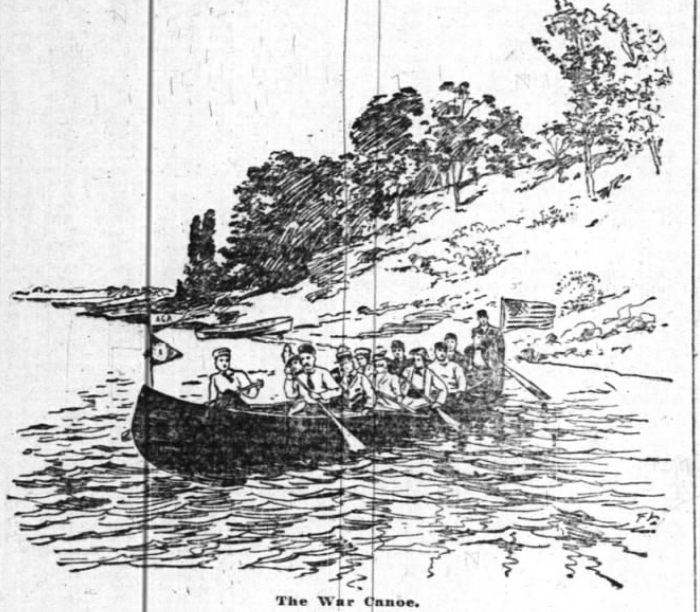
The type of paddle—whether by single-blade paddle or double-bladed paddle—isn’t important. Whether the craft is of cedar, canvas, aluminum, fiberglass, or plastic matters not. Relishing the tranquility and majesty of the St. Lawrence is paramount. Yet part of me feels that after 150 years, Rob Roy has won out after all.
By Lynn E. McElfresh, Grenell Island
Lynn McElfresh delights us every single month... this month's article is just as wonderful as her first, written in August 2009. She has taken us on so many journeys into the past as well as introducing us to some amazing people, places and things! (See her first 110 articles here! To see the rest of Lynn’s island experiences, search our new TI Life format under Lynn McElfresh.)
Lynn came to Grenell Island for the first time in 1975, to meet her fiancé’s family, Lynn has written two novels in a series of nine novels about life in the Islands from 1883 to the 1960s. The third book, Grenell 1904, is almost here... and the fourth, Grenell 1912, is well underway!
See All About Lynn McElfresh & Her Books, written in the September 2020 issue of TI Life.
Posted in: Volume 16, Issue 2, February 2021, History
Please click here if you are unable to post your comment.
